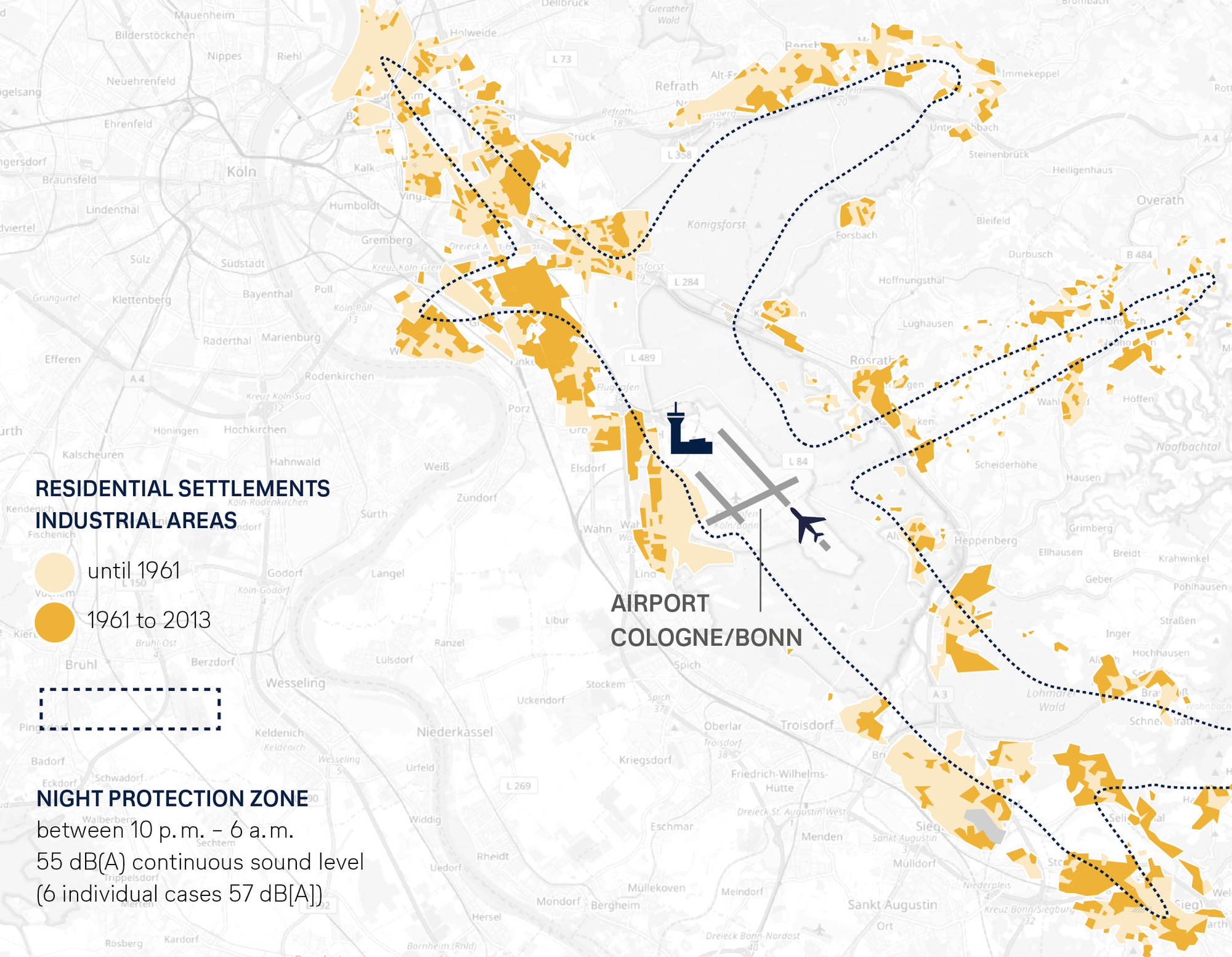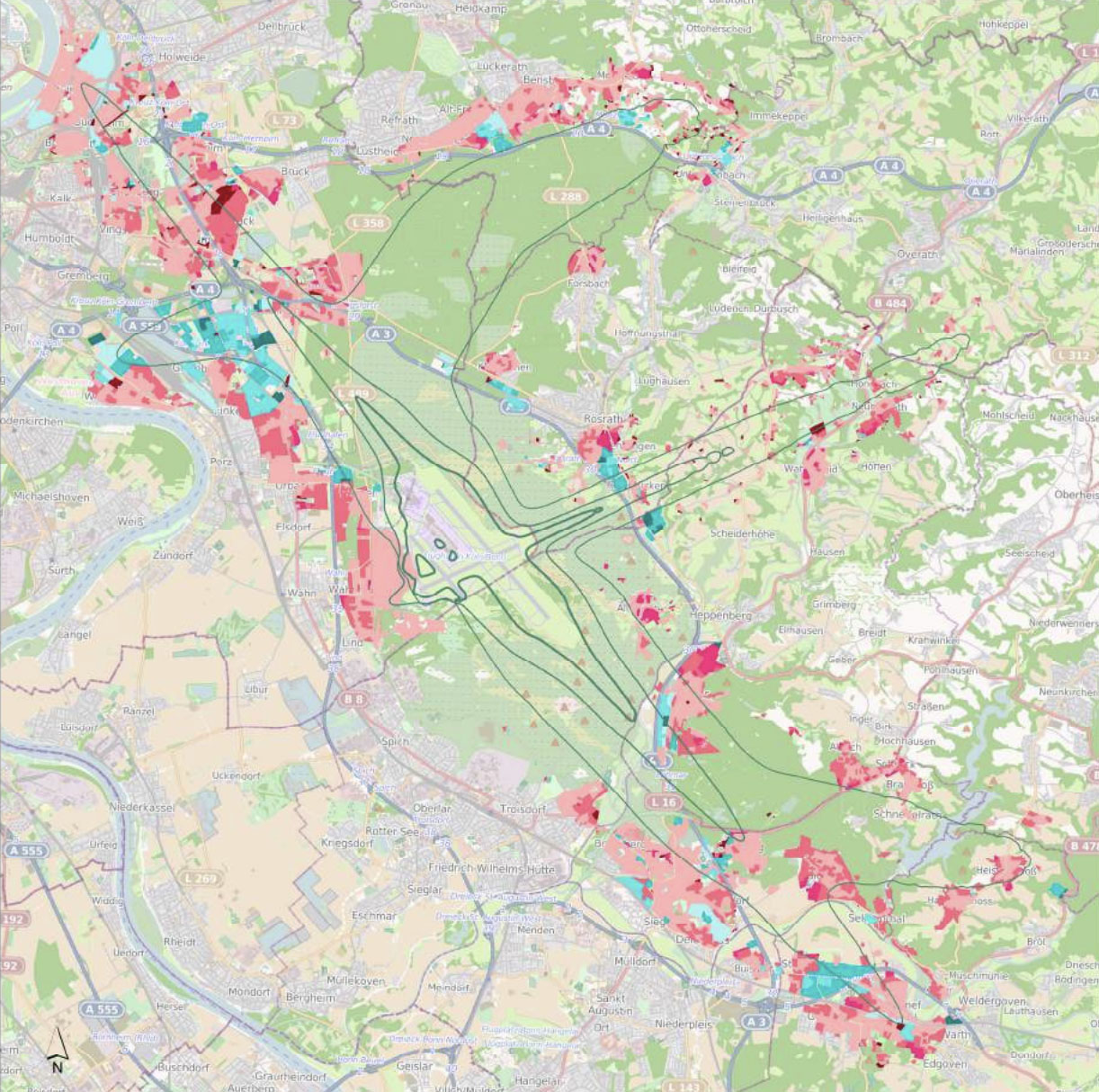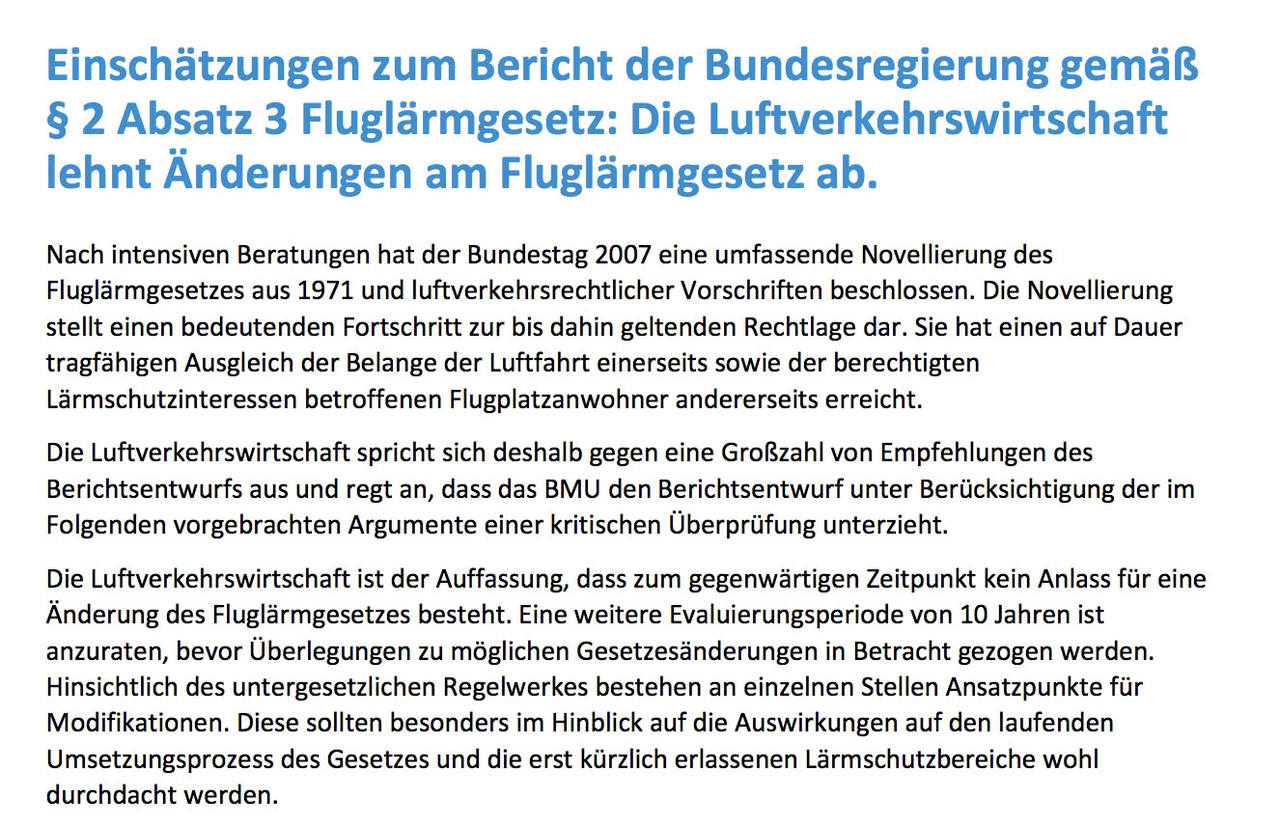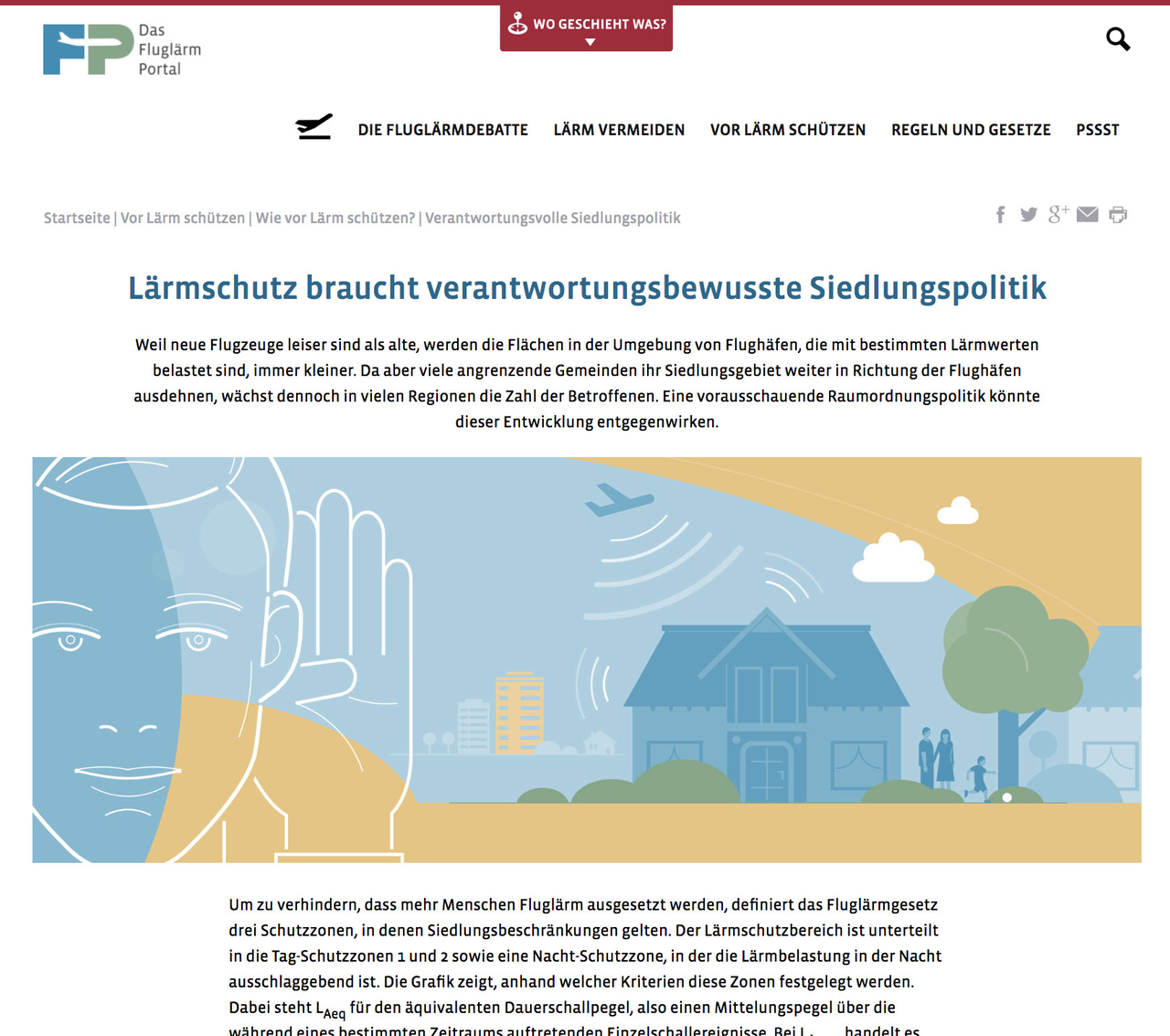Aircraft noise
Building permits counteract noise reduction
The desire for more mobility – whether for personal or business reasons – is one of the megatrends around the world. Road, rail and air traffic are being called on to facilitate mobility that is as sustainable and thus as quiet as possible. Airlines and airports have been on the right path for years. However, successes are being counteracted by questionable building permits.
Aircraft noise protection law constitutes a sufficient basis
In 2007, after intensive consultation, the Bundestag comprehensively amended the Aircraft Noise Act of 1971. Since then, noise impact research has produced no new findings. This is also confirmed by the recent case law of the Higher Administrative Court of Kassel. Any change in the Aircraft Noise Act in the context of the current evaluation would be, given the facts, unfounded.
Building permits contradict ICAO objectives
The UN aviation organization, the ICAO, provides worldwide binding guidelines to solve noise problems near airports. This includes, in particular, a responsible settlement policy. However, not all municipalities and federal states actually shoulder the associated responsibility. According to a study conducted by the University of Bonn and the RWTH Aachen, residential and commercial areas are getting ever closer to the airports on account of the building on vacant lots, the densification of existing settlements or even the designation of completely new settlement areas. Frankfurt, Munich, Dusseldorf, Hamburg, Cologne/Bonn and Hanover were examined.
More people are being exposed to aircraft noise
This authorization practice is leading to increasing numbers of people living and working near an airport. The impact of people moving to such areas was recently quantified at Zurich Airport. According to the current Airport Report of the Canton of Zurich, the population around the airport increased by 1,600 from 2015 to stand at 83,000 in 2016. This influx of new residents has been observed for years and is the main reason why more and more people are being exposed to aircraft noise. This is “also a product of the cantonal spatial planning concept, which envisages intensified settlement development near the airport”.
Lufthansa Group is investing in quieter aircraft
Only by working together the spheres of politics and business can unite to relieve people of aircraft noise. It should be the task of municipalities and federal states to keep new develop- ments around airports as low as possible. In turn, the main task of the airlines is to use the quietest aircraft possible. The Lufthansa Group is shouldering its responsibility here, in particular by investing in the latest aircraft. Take the current example: At the end of September, the company ordered, at a list price of around 3 billion euros, 27 more Airbus A320neo and A321neo aircraft. Their noise carpets are only half those of its predecessor models.
Example cologne/bonn

In the vicinity of the Cologne/Bonn airport, settlement areas – both within and outside the noise protection zones – have been continuously developed over the past 50 years. Since the 1980s, the densification of existing residential areas has been in the foreground.
Example cologne/bonn

In the vicinity of the Cologne/Bonn airport, settlement areas – both within and outside the noise protection zones – have been continuously developed over the past 50 years. Since the 1980s, the densification of existing residential areas has been in the foreground.
Sources: RWTH Aachen, Universität Bonn
Aircraft noise protection law constitutes a sufficient basis
In 2007, after intensive consultation, the Bundestag comprehensively amended the Aircraft Noise Act of 1971. Since then, noise impact research has produced no new findings. This is also confirmed by the recent case law of the Higher Administrative Court of Kassel. Any change in the Aircraft Noise Act in the context of the current evaluation would be, given the facts, unfounded.
Further content on the topic
Study
Settlement area development in the airport surroundings
Spatial analysis, stakeholder interests and options for action by the Geographical Institute of the University of Bonn in cooperation with the Faculty of Architecture, RWTH Aachen Dated: April 2017

Position statement
Aircraft Noise Protection Act
Position statement by the German Aviation Association (BDL) on the report of the Federal Environment Ministry on the Aircraft Noise Protection Act.
Dated: 18 May 2018

Website
Noise protection calls for a responsible settlement policy
At www.fluglärm-portal.de, the German Aviation Association has compiled useful information about the topic of aircraft noise. An important chapter is devoted to the topic of settlement policy.
